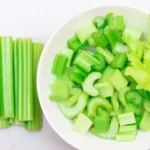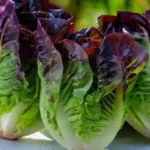Friendly tomato companion plants are some of the most common and popular vegetables any gardener can grow. And now, it’s easier than ever to help protect your juicy tomatoes from harmful diseases and damaging insects while enhancing their flavor in your backyard garden.
If you are looking for a thriving, bountiful garden for the upcoming season, look no further than the amazing world of companion planting! This method is a fantastic way to create a nutrient-rich environment that helps your plants grow stronger and healthier and produce even more come harvest.
And what better way to learn this fantastic technique than while growing the humble tomato, which is undoubtedly one of the most desired vegetables gracing any budding garden. Let me guide you with a comprehensive list of the best plant partners for your favorite tomato varieties.
You can enhance tomato growth by growing its most favored companion plants, including basil, garlic, parsley, marigolds, nasturtiums, asparagus, borage, squash, and chives. However, keeping your juicy reds away from brassica family members like cabbage, cauliflower, and broccoli is essential. Likewise, potatoes, eggplant, and corn make unfriendly tomato companions, so be sure to grow these crops elsewhere in the garden.
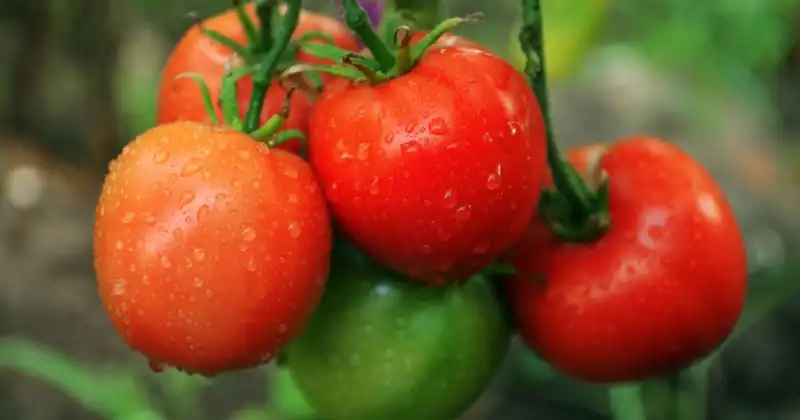
Are you ready to take your tomato crop to the next level? Whether you’re a seasoned grower or just beginning your gardening journey, I have the complete information you need to make your tomatoes thrive season after rewarding season.
Discover the perfect plant companions that will boost your yields, protect your plants from pests and disease, and learn which plants to avoid. Then, it’s time to roll up those sleeves and get your hands dirty as we delve into the world of tomato companion planting.
Humble Highlights
- Learn the 4 best benefits companion planting offers growers of all skill levels and why you may be preventing your garden from reaching its peak if you are not implementing this ancient practice.
- Save time by knowing the 12 best companion plants to grow alongside your tomatoes to create more abundant summer harvests.
- Avoid these 7 not-so-friendly companion plants near your tomatoes and why you should rotate your tomato patch every year so you can avoid unnecessary disease.
What Is Companion Planting
Companion planting is an ancient gardening technique that eliminates or severely reduces the need for chemical fertilizers and pest control applications. This method harnesses the three primary benefits of plant companionship and interdependent relationships, including nutritional inputs, protection, and decoy (trap cropping).

Nutritional benefits of companion planting include the unique interrelationships between crops like beans and peas and corn. For example, beans and peas are nitrogen-fixing plants, providing this necessary nutrient to your garden’s soil where it can be absorbed by nearby vegetation. And while nearby corn enjoys the extra boost of nitrogen, its stalks offer a sturdy base for the vertically climbing peas and beans to produce more food. 1
The protective conveniences of companion planting demonstrate how particular plants shield their neighborly companions through natural deterrence. Plants can help prevent or restrict disease and pest infestations within your growing space by emitting intense aromas or releasing special chemicals into the soil.
For example, the humble marigold attracts hoverflies to your garden, a natural predator of the ubiquitous aphid, one of the garden’s most infamous pests that seek to decimate your foliage.
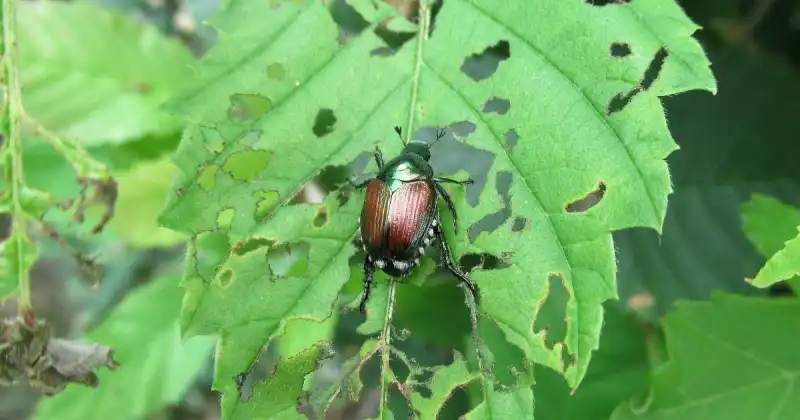
Decoy benefits of companion planting (also known as trap cropping) include growing “sacrificial” plants nearby to lure away destructive garden pests that target a particular crop you’d instead like to keep healthy. Interestingly, some trap crops are vegetable plants themselves.
Some great examples include planting roses to draw the notorious (and my nemesis) Japanese beetles, radishes to lure flea beetles, collards for cabbage worms, parsley for slugs and snails, and finally, dill for tomato hornworms.
Check Lowest Prices On Companion Planting Books Here
In his fantastic book Square Foot Gardening, author James Paris describes companion planting as “Best practice is to intersperse your crops with herbs and/or flowers that protect your crop by disguising the smells and sights that attract the insects.”
Companion planting is a sustainable method that enhances the health of your garden by diversifying and creating a balanced ecosystem less vulnerable to pests and diseases. It is an excellent alternative to the risky practice of monocropping, the development of growing only one variety of vegetables while avoiding the proliferation of synthetic chemicals and their overuse within your garden.
What Are The Benefits Of Companion Planting
There are plenty of indispensable advantages of companion planting. However, some of the most common that can improve your backyard garden include the following:
- Plants Sharing Vital Nutrients
- Providing Protection From Infestations And Diseases
- Preventing Soil Erosion
- Adding Aesthetic Beauty

Let’s take a closer look at these four widespread benefits so you, too, can realize your garden’s full potential.
Nutrient Sharing Solution
Companion planting is an exciting gardening method that can maximize plant growth through nutrient sharing among friendly foliage neighbors. Planting different crops with varying nutritional requirements and foraging strategies can minimize soil competition among your vegetation while preventing nutrient depletion within your soil. 2
While some “light-feeding” crops, like carrots and beets, need less nitrogen throughout their lifecycle, some plants require more. This ravenous vegetation, known as “heavy feeders,” requires a lot of nitrogen and readily absorbs and extracts this vital nutrient from your soil. For example, vegetables grown for their leaves or fruits, such as cabbage, broccoli, celery, squash, eggplant, and tomatoes, are typically considered heavy feeders. And corn is known to be one of the heaviest feeders of all.
This video explains some of the most common benefits of companion planting and how you can use this age-old technique in your green space. Remember, matching friendly plants in the garden is all about creating a relationship between your vegetation that mutually benefit each other and can be implemented by gardeners of all skill levels and experience.
Nitrogen-fixing plants like soybeans, peanuts, and lentils, along with the beans and peas mentioned above, make excellent garden companions because they can store nitrogen in their root nodules for future use, benefiting many neighboring “heavy feeding” plants.
By employing companion planting in your growing space, you can create a nutrient-rich environment that supports healthy plant growth and yields a bountiful harvest.
Protection From Infestations And Diseases
Companion planting is an innovative and effective method that helps protect against pesky infestations while limiting the use of harmful chemicals. For example, besides being an excellent cover crop, Hairy vetch is a highly effective plant in protecting its neighbors, providing up to 65% reduction in foliar diseases and an 88% decrease in diseased fruit.
Check Lowest Prices On Cover Crop Seeds Here
This quick-growing cover crop adds more nitrogen to the soil than it needs and doubles as a natural weed deterrent. Crimson Clover is yet another natural living mulch that effectively out-competes weeds for vital resources.
You can grow Crimson Clover as a cover crop in both summer and winter and use its cuttings as a natural fertilizer by spreading them atop your soil or adding them to your backyard compost pile.
Growing nasturtiums demonstrates how companion planting can effectively control pest infestations in the garden. Despite being highly attractive to aphids, nasturtiums are easy to grow and can be used as a “sacrificial” plant to protect nearby plants from pest damage.
By drawing aphids away from more valuable garden plants, nasturtiums can serve as host plants and effectively prevent aphids from causing their infamous harm in your green space.
Prevents Soil Erosion: Complex Root System
Companion planting can also help maintain your soil’s quality and help reduce erosion. Because companion plants often have complex root systems that can sufficiently penetrate the ground, they can effectively hold your soil together. One plant’s roots can also help create channels for water and nutrients to flow freely among your vegetable beds, benefiting adjacent plants.
Friendly neighboring vegetation can also help to reduce erosion by shading the soil. When plants are purposely grown together, they create a natural cover or canopy over your garden bed, allowing your soil to retain moisture and prevent evaporation.
If you live in a warmer region, this welcome convenience can be especially beneficial during hot, dry weather conditions, as it reduces the risk of soil drying out and becoming more susceptible to erosion. 3
Adds Beauty: Purely Aesthetic
Structuring your garden with friendly companions is also an effective technique that can help improve the health and beauty of your garden. Mixing annuals and perennials with varying bloom times allows you to create a garden that blossoms continuously throughout the growing season. With a bit of planning, you ensure there will always be something flowering, providing color, fragrance, and a source of nectar for pollinators.
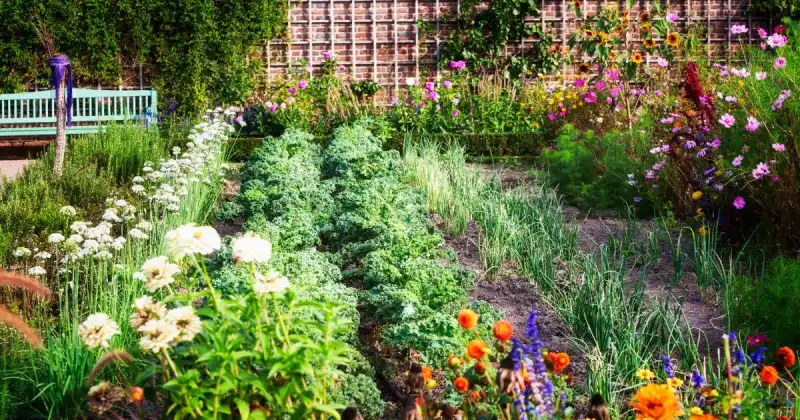
In addition to creating an attractive and vibrant garden, companion planting helps attract beneficial insects and pollinators, such as bees and butterflies. Plants such as marigolds and nasturtiums are both beautiful and essential for inviting these desirable pollinators into your space. These plants provide a rich source of nectar and pollen, which helps to sustain bees and butterflies and promotes their growth and reproduction.
Companion Plants For Your Tomatoes
Fortunately, some of the best companion plants for tomatoes are also the most popular. Several familiar neighborly tomato companions include:
- Basil
- Parsley
- Thyme
- Marigolds
- Nasturtium
- Carrots
- Borage
- Squash
- Asparagus
- Chives
- Celery
- Garlic
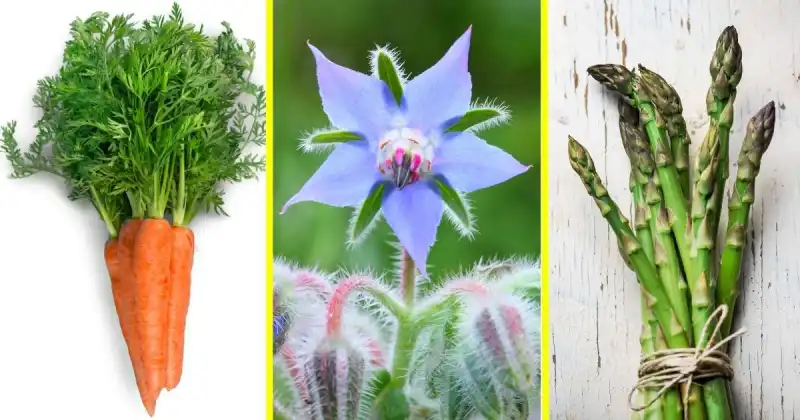
Let’s explore why these plants make great pairings with your tomatoes.
Aromatics And Fragrant Herbs (basil, parsley, thyme)
Planting fragrant herbs like thyme, basil, and parsley alongside your tomato plants can have numerous positive benefits. The pleasant aroma of these herbs attracts pollinators and beneficial insects like bees and ladybugs while concealing tomatoes from harmful pests such as whiteflies and hornworms.
Check Lowest Prices On Herb Seed Mixes Here
Basil is a natural insect repellent that can help intensify the flavor and yield of tomatoes while serving as a trap crop by coaxing whiteflies away from your juicy reds. Meanwhile, parsley makes a great tomato companion plant that attracts hoverflies, which primarily feed off harmful pests like aphids and spider mites while providing ground cover to retain moisture and suppress weed growth.
In addition to basil and parsley, thyme is a fragrant herb that is a natural and effective repellent against the infamous tomato hornworm and pesky whiteflies. Planting thyme near your tomatoes can help to boost their defenses against these pests, leading to a healthier and more vibrant crop. Additionally, like basil, thyme can enhance the flavor of tomatoes when they ripen, infusing them with a delicious and savory taste.
So, growing these aromatic and fragrant herbs alongside your tomatoes can create a balanced and thriving ecosystem and provide practical and culinary benefits to your garden.
Flower Family (marigolds, nasturtium)
If you want to create a thriving and sustainable garden, and what humble gardener doesn’t, consider adding marigolds and nasturtiums to your tomato bed. Marigolds make excellent companions for tomatoes. Not only do their bright colors and textures add a homey and comforting feel to any backyard garden, but their ability to lure slugs away from your precious fruit is legendary.
Check Lowest Prices On Nasturtium Seeds Here
By acting as a trap crop, marigolds create a natural and chemical-free environment for your garden. Moreover, this humble flower improves soil quality, attracts beneficial insects into your green space, and represses weed growth, making them an all-around great addition to your garden. 4
Here’s a great video explaining some of the best companion plants you can pair with your tomatoes in the garden to realize more abundant harvests. And the best part is, with just a little pre-planning, you don’t have to work any harder to achieve these fantastic results.
Another companion plant to consider planting with tomatoes are nasturtiums. This gorgeous annual produces peppery, bitter oils that make an excellent pest-repellent for aphids and squash bugs. And while nasturtiums can be a great deterrent for damaging insects, it’s essential to be mindful of their sprawl, as they tend to overtake other garden plants if not controlled.
Check Lowest Prices On Marigold Seeds Here
By planting friendly nasturtiums near your tomato bed, you can create a natural barrier that deters pests while adding a unique pop of color to your garden’s aesthetics. Combining these companion plants with your tomatoes can improve your garden’s health and overall yield while creating a visually stunning and sustainable space you can enjoy all season long.
Carrots
Carrots and tomatoes create a powerful complementary team that offers several benefits when grown together. One of the advantages of pairing carrots and tomatoes together is that carrots can help improve the tomatoes’ flavor. Although the exact mechanism behind this phenomenon is not yet understood, it is believed that the compounds produced by carrots are responsible for enhancing taste.

In addition to flavor improvement, another advantage of planting carrots and tomatoes together is that carrots can help to aerate the soil around the roots of your tomato plants. This aeration can allow channels for increased air and water penetration and circulation, which can be crucial for tomato plants’ health and proper growth.
In addition, as carrots develop, their roots dive deep into the soil, helping to alleviate compaction, which can reduce the risk of root rot and other soil-borne diseases. This feature is significant for tomatoes, which require well-draining soil to thrive.
Check Lowest Prices On Carrot Seeds Here
Furthermore, planting carrots and tomatoes together can help amend and improve soil quality. Carrots are well-known for their ability to absorb excess nitrogen from the soil, which can help to prevent over-fertilization and its adverse effects on tomato growth.
In return, the tomato plants can provide comforting shade to the carrots, offering them a reprieve from the sun which may help prevent them from becoming too hot and bolting (going to seed) prematurely.
As you can see, tomatoes and carrots are two crops with a mutually beneficial relationship. Therefore, pairing these two complimentary plants together is a wise decision for the upcoming season.
Borage
Borage, also called starflower or bee flower, is primarily cultivated for its seeds. However, this plant is an annual herb with coarse and hairy leaves that can reach heights up to two feet tall. This staggeringly beautiful blue flower makes an excellent companion plant for tomatoes, as it has multiple benefits that can enhance the health and yield of your tomato crop. 5

Perhaps one of the most significant advantages of Borage is its natural ability to repel various pests that can cause harm to tomato plants, including the dreaded tomato hornworm. In addition, the broad leaves of Borage provide valuable and welcome shade to the soil, helping to retain moisture and prevent weed growth.
Check Lowest Prices On Borage Seeds Here
Not only does Borage repel pests and provide shade, but it can also positively affect the growth and flavor of tomato fruits. This is because Borage is rich in minerals such as potassium and calcium, which are essential for healthy plant growth. Some growers have even reported that their tomatoes taste better when grown alongside Borage, making them a worthwhile addition to any tomato garden.
Borage is an attractive plant that adds visual interest to your garden with its bright blue flowers and fuzzy leaves. Yet, it may be one of the most underutilized plants in the garden.
First, Borage is a bee magnet. If you want to welcome a hoard of pollinators into your green space, plant some Borage, and you’ll quickly see the results.
Second, you can eat this versatile herb. You can incorporate the flowers in teas, yogurts, spreads, and salads for a refreshing treat. The leaves can be lightly steamed or sauté and boast generous quantities of vitamins C and A and iron.
Lastly, Borage can be used as a natural mulch for your garden by welcoming organic matter to the soil. Because Borage produces plenty of plant matter during its growth cycle, you can prune its foliage often and drop the clippings atop the ground. The chopped material will enrich your garden soil as it decomposes, providing a natural weed suppressant to any emerging weeds.
Squash
Squash surprisingly makes a great companion plant for tomatoes because both plants thrive in similar growing conditions. Therefore, planting squash and tomatoes together in the garden can be a smart choice for gardeners who want to maximize their harvest of both crops.
In addition to their compatibility, the sprawling growth habit and large squash leaves provide excellent ground cover, which helps prevent water loss from the soil, benefiting both plants in hot and dry climates where water conservation is essential.

By growing squash alongside your tomato plants, you can create a thriving ecosystem that supports both crops equally. Squash also has a relatively low nutrient requirement, so it won’t compete with tomatoes for valuable soil nutrients. In fact, squash can even help to improve the soil quality, as its leaves and stems break down and decompose over time, adding organic matter back into the soil and enhancing and amending its condition.
Asparagus
Regarding companion planting, asparagus and tomatoes can make great neighbors in the garden. Although it can take up to two years for your asparagus plants to reach maturity, this humble plant can help clear the soil of root-knot nematodes attracted to tomato plants.
These root-knot nematodes attack a broad range of vegetable plants, and their increasing numbers can spell disaster in the home garden. These microscopic eel-like worms damage your vegetation by feeding on the roots of your plants to the point where they can no longer absorb soil nutrients and water.
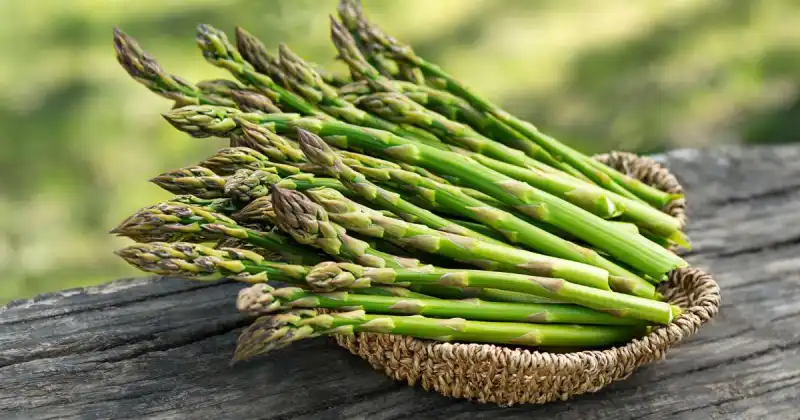
Because asparagus helps combat these destructive nematodes by allowing the soil to recover and reduce the risk of infestation, it is a great choice to grow in a bed that will later be used to foster tomatoes. 6
Check Lowest Prices On Asparagus Seeds Here
On the other hand, tomatoes naturally repel asparagus beetles with a chemical called solanine. This unique chemical can be released through the plant’s leaves and roots and acts as a natural insect repellent, protecting the tomato plants and the neighboring asparagus plants nearby. You can create a practical, productive, healthy, natural, and sustainable garden by planting tomatoes and asparagus together.
Chives
Chives are well-known for repelling aphids, nematodes, and mites due to the natural oils in their leaves, which produce an onion-like scent that deters these predators. This makes chives a great companion plant for many crops, including tomatoes.
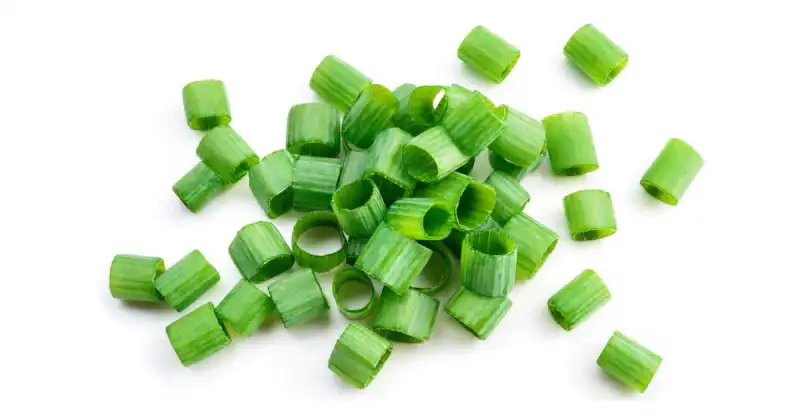
In addition to their pest-fighting properties, chives attract pollinators to the garden when they develop edible flowers, promoting healthy growth for all nearby plants. Moreover, using chives alongside basil has been found to enhance the flavor of tomatoes, resulting in a more savory crop. Consider planting chives throughout your tomato beds or in pots that you can strategically place around your tomato plants.
Celery
Celery is yet another excellent choice to pair with your budding tomato plants. One of the best benefits of growing celery alongside tomatoes is its ability to deter bugs that love to feast on your succulent tomatoes.
Check Lowest Prices On Celery Seeds Here
In addition, the scent of celery appears unappealing to many of these lurking pests, making them less likely to target your tomato crop.
Growing celery is a natural and effective way to control pests in your garden without harmful pesticides. Plus, pairing celery and tomatoes side by side can help to maximize your growing space and increase your overall yield of both crops.
Some growers feel that celery is a crop that should only be grown by experienced gardeners. I’m not one of them. Although celery has particular needs, it is relatively easy to grow.
To grow celery alongside your tomatoes, ensure it receives plenty of water throughout its growth cycle. Investing in a drip irrigation system, especially if you live in a dyer region, makes a wise investment here.
Additionally, like most plants, celery enjoys rich, nutrient-dense soil.
It’s best to add fresh, organic compost atop your garden bed or incorporate it within the first few inches of your soil two to three weeks before sowing your celery. Consider adding organic matter around your celery throughout its midsummer to late fall growing season, or include a suitable organic fish emulsion fertilizer for extra nutrient input.
Check Lowest Prices On Drip Irrigation Kits Here
Garlic
Garlic is a highly effective natural pest repellent that is especially useful in growing alongside tomatoes. Its intense aroma masks the scent of ripening tomatoes, effectively deterring pests such as moths, root maggots, and cabbage loopers. Garlic’s potent smell also helps to repel spider mites, among other pests that can harm your tomato plants.
If you’re looking for a natural and creative way to protect your tomato plants, you can try burying garlic cloves about 1 inch in the ground around the base of your tomato plants. Inserting the garlic into the soil creates a homemade insecticide that is highly effective and can help keep pests at bay without the need for harmful chemicals.
One of the main reasons to avoid synthetic chemicals when targeting unfavorable garden insects is that they can do more harm than good when applied. When sprayed, it’s not just the aphids or tomato hornworms you effectively neutralize. Thanks in part to the remaining chemicals’ residuals, these sprays also target beneficial pollinators like bees, and predatory insects, like lacewings and ladybugs, that feed on the damaging pests.
When these pollinators and beneficial predatory insects are absent, your garden’s health may suffer severely. With no natural predators, detrimental insects may build up a chemical immunity and rebound more aggressively than before. Remember, keep a watchful eye on your green space so you can catch any challenges early on, and try natural methods first before resorting to synthetics.
Plants To Avoid Growing Near Tomatoes
While some plants make friendly companions for your prized tomatoes, not all are equally accommodating. Carefully choosing your foliage partners is crucial in avoiding unnecessary competition for vital soil resources or unwanted, even dangerous, visitors in your garden. There are several vegetable plants you should avoid planting near your tomatoes, including:
- Cabbage
- Cauliflower
- Brussels sprouts
- Broccoli
- Potatoes
- Eggplant
- Corn
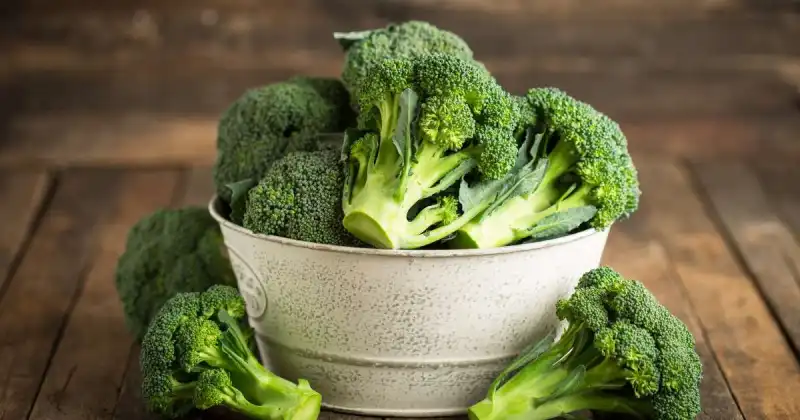
Let’s consider why gardeners should consider planting these particular vegetable selections elsewhere in their garden space.
Brassicas (cabbage, cauliflower, Brussels sprouts, broccoli)
The Brassica family, which includes cabbage, cauliflower, Brussels sprouts, and broccoli, is often not recommended as friendly companion plants for tomatoes. While brassicas can offer many benefits to your vegetable garden, such as being nutrient-rich and deterring pests, they can also stunt the growth of developing tomatoes.
Brassicas release compounds called glucosinolates that can inhibit the growth of plants in the nightshade family, which includes eggplant, potatoes, peppers, and of course, tomatoes.
When Brassicas are grown near tomatoes, releasing these glucosinolates can reduce the size and yield of tomato plants. Additionally, Brassicas attract some of the same pests that commonly affect tomato plants, such as aphids and whiteflies, so planting them together may increase and encourage pest dominance in the garden.
Potatoes
As mentioned above, potatoes and tomatoes are in the same nightshade family, which means they are both susceptible to common pests and diseases. Therefore, growing these two plants together results in competition for nutrients, which can cause stunted growth and smaller yields for both crops.
Additionally, planting tomatoes near potatoes can increase the risk of potato blight, a disease caused by a specific fungus that thrives in warm and moist environments and can quickly spread to other plants in the garden.
Therefore, it is best to keep these plants separate and plant them in designated areas of your garden to avoid any risk of cross-contamination. Proper crop rotation and good garden hygiene can also help prevent the spread of diseases and ensure healthy growth for your tomatoes and potatoes.
Eggplant
Eggplants are another plant belonging to the nightshade family and are likewise vulnerable to early and late blight. It is a disease that can cause plant tissues to die, resulting in spotted and withered leaves.
In addition, when eggplant and tomatoes are grown together, they can spread blight to each other, creating a build-up of the disease in the soil that may get worse every year if not treated properly. In some cases, the blight can even expand throughout your entire garden, putting all your plants at risk. 7
Corn
Corn and tomato plants don’t match well, as they share many of the same pests. The tomato fruit worm, also known as the corn earworm or cotton bollworm, is a particularly notorious pest that loves to nibble on corn and tomato crops.
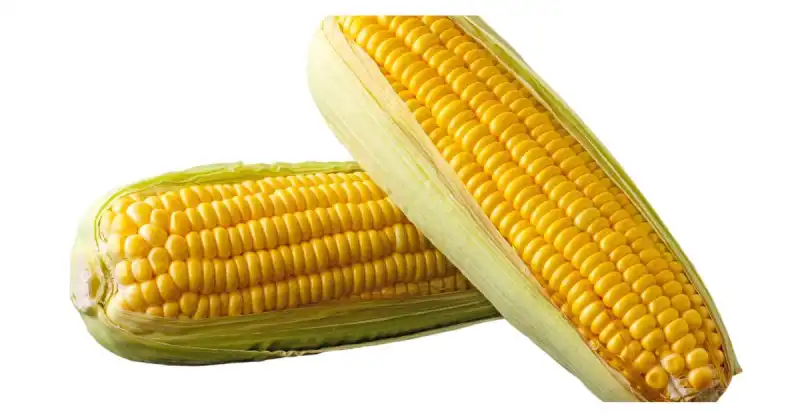
And, if you plant corn and tomato crops side by side, these pests are likely to be attracted to both, leading to more extensive damage and possible total crop loss. If not addressed, these pests will become even more pervasive and may even infest other crops elsewhere in your space, potentially decimating the entire garden.
Conclusion
Companion planting is a powerful technique that can help maximize the growth of your tomato plants. By carefully selecting the proper plant companions, such as basil, garlic, asparagus, squash, carrots, and parsley, to name a few, you can improve soil quality, deter pests, and ultimately boost the growth of your tomatoes.
However, it’s essential to avoid certain plants that may compete for resources or attract unwanted and damaging pests to your garden. For example, corn, eggplant, potatoes, and brassica family members are all vegetable plants best grown elsewhere in your garden to avoid potential conflict with your tomatoes.
Remember, companion planting provides many benefits within your green space. Several popular advantages include allowing your plants to share soil nutrients without competing for them, providing pest and disease protection, preventing soil erosion, and adding aesthetic beauty to your garden.
With companion planting, you can create a sustainable garden that supports plant growth, promotes biodiversity, and protects the environment. In addition, this technique is an innovative and effective way to provide for your garden without harmful chemicals. What humble gardener wouldn’t want that? So, why not try it and enjoy a garden bursting with life, vitality, and beauty? Here’s to a fruitful growing season ahead!
What friendly companion plants have you grown alongside your tomatoes with success? We’d love to know! So meet us in the comments below and spill!
SOURCES
- ATTRA Sustainable Agriculture – Companion Planting & Botanical Pesticides: Concepts & Resources
- Wikipedia – Nitrogen-Fixing Crops
- University Of California, Agriculture & Natural Resources – Nematodes
- Wikipedia – Tropaeolum
- University Of Illinois Urbana-Champaign, College Of Agricultural, Consumer & Environmental Sciences – Borage
- University Of Wisconsin-Madison, Extension – Root-Knot Nematode
- Penn State University, Extension – Hairy Vetch As A Cover Crop



